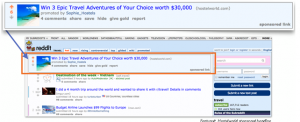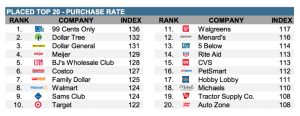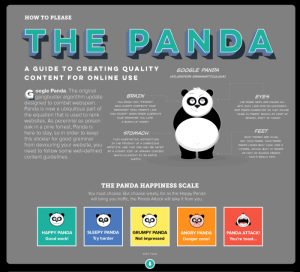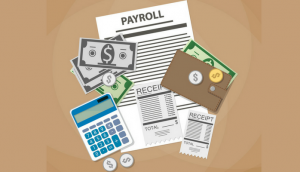How do you give consumers the star treatment they want? Columnist James Green says you need to look toward data, decision-making engines and channels to deliver the best experience.

Imagine the ultimate online shopping experience: An hour after you search online for a pair of shoes for an upcoming event, your favorite shoe retailer delivers a variety of relevant shoe recommendations, including new arrivals, directly to your inbox. You decide to revisit the retailer’s site, continue browsing and see recommendations for complementary items that pique your interest. But you get distracted and leave without purchasing.
The next email from the retailer reminds you about the shoes you were considering and includes a coupon to use towards your next purchase. The relevance and timeliness of the email encourage you to revisit the retailer, and the on-site recommendations are perfectly curated to your tastes. You end up purchasing the perfect shoes and accessories for your upcoming event.
Technology gives marketers the opportunity to treat every customer like a VIP. Bespoke experiences harness the power of external and customer-centric information, utilize advanced algorithms to recommend what’s relevant to each customer and have the right delivery channels in place to capture their attention on the device where they’re most likely to engage.
Personalization can have this type of direct and positive impact on the core metrics that make any e-commerce business successful: customer loyalty, conversion, retention and average order value. In fact, more than half of senior marketers polled in a 2015 survey by the CMO Council said that using enriched or personalized content created higher response and engagement rates.
Rounding up the best data, decision engine and channels will help you give customers the white-glove treatment they want — and expect — today.
Creating a VIP program with data
Volumes of data are available that signal the intent and interests of various audiences, but it’s largely anonymous and fails to cater to customers at the individual level. We see this primarily on the media and advertising side, where ad technologies engage audience segments based on aggregated actions and categories.
You can still deliver a relevant experience through advertising, but the level of information available through this channel is not enough to enable true personalization.
On the other hand, there’s customer data within a brand’s CRM (customer relationship management) system, as well as product-level information that enables brands to build rich people-based profiles. Most of this data is captured from actions like past purchases, on-site activity and email engagement.
To get the VIP status, it’s best to pair the anonymous actions with more detailed customer profiles, allowing brands to create a single comprehensive view of their customer — including their intent, interests, purchase history, price sensitivities and so forth. And when such data is used in a way that benefits the consumer, your customers will likely be more receptive to sharing their data.
Microsoft released a survey last year that cited favorable numbers related to consumers’ attitude toward sharing data, reaching as high as 79 percent when it came to search history, 75 percent for age, and 65 percent for site visits. However, the survey also found that 83 percent of respondents said they “expect brands and advertisers to ask for their permission before they use their digital information.”
Recommending what’s right
The more information you analyze, mine and process, the more possible outcomes you have for every given customer. Today, there’s a clear obsession with data and its ability to make predictions to drive revenue.
The decision-making engine needs to be able to determine when to show a product, the best product to show, and how to generate the strongest engagement at the most efficient cost.
The recommendation engine uses data science to determine the best outcomes. This might be based on relational, contextual and conditional elements, all of which are used to set up rules, such as (albeit a simplified representation) “recommend black shoes, when a customer is looking at purchasing a black dress.”
These types of recommendations are especially important for companies that sell products across multiples brands and categories and want to serve up the latest and greatest products for every individual. It’s not enough to just know people at the individual level; you need the machine intelligence to process what people are doing in the moment so that you can recommend what’s right — right now.
Delivering an orchestrated experience
It’s all about keeping your customer’s attention, from beginning to end. This means understanding them at multiple stages of their buying journey and engaging them with relevant marketing as they browse the web, visit your site and open your emails.
To successfully do this, your data and customer information should be centralized to be able to fuel real-time decisions across the buyer’s journey, from when they’re actively in purchase mode to when they are dormant. This channel orchestration should be designed to help you acquire more customers, keep high-value shoppers engaged and be reactive to those you may have lost.
When channels are not orchestrated, you’re likely to be leaving sales on the table — and worse, creating a poor experience. For example, you may give someone a 20-percent-off coupon for an item they’ve already purchased or recommend products that are way above their price point.
It’s become increasingly important to show customers that your brand knows them best. We need to make the experience online similar to the personal touch people often feel in-store.
The more you know about your customers and their behaviors, the better you can serve them with personalized messaging and leave the lasting impression of being treated like a VIP.
Some opinions expressed in this article may be those of a guest author and not necessarily Marketing Land. Staff authors are listed here.
Marketing Land – Internet Marketing News, Strategies & Tips
(148)
Report Post










